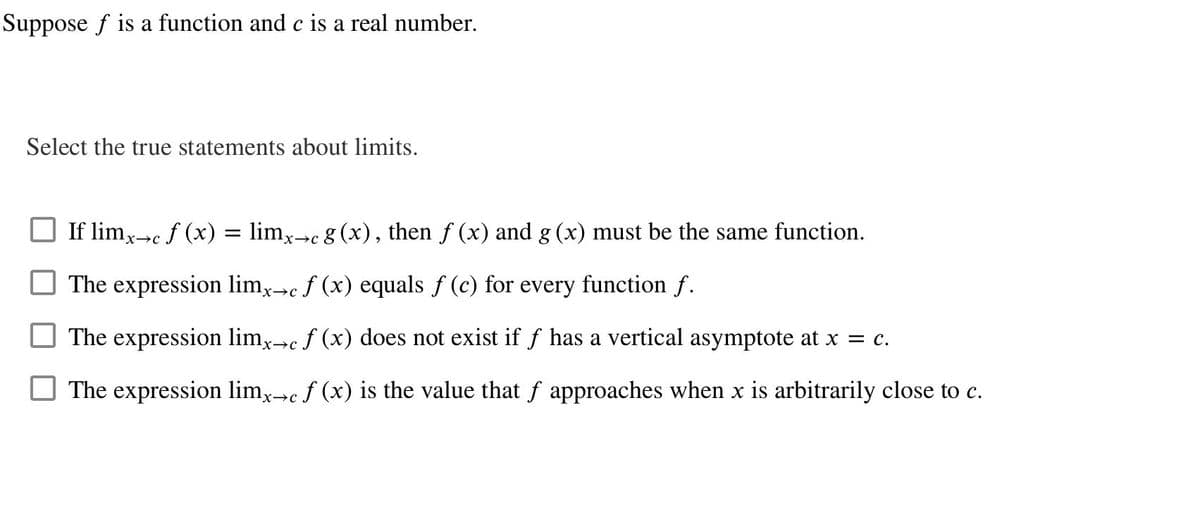Suppose f is a function and c is a real number. Select the true statements about limits. If limx→c f (x) = limx→c g(x), then f (x) and g (x) must be the same function. The expression limx→c f (x) equals f (c) for every function f. The expression limx→c f (x) does not exist if f has a vertical asymptote at x = c. The expression limx→c f (x) is the value that f approaches when x is arbitrarily close to c.
Suppose f is a function and c is a real number. Select the true statements about limits. If limx→c f (x) = limx→c g(x), then f (x) and g (x) must be the same function. The expression limx→c f (x) equals f (c) for every function f. The expression limx→c f (x) does not exist if f has a vertical asymptote at x = c. The expression limx→c f (x) is the value that f approaches when x is arbitrarily close to c.
Chapter3: Functions
Section3.3: Rates Of Change And Behavior Of Graphs
Problem 2SE: If a functionfis increasing on (a,b) and decreasing on (b,c) , then what can be said about the local...
Related questions
Question

Transcribed Image Text:Suppose f is a function and c is a real number.
Select the true statements about limits.
If limx→c f (x) = limx→c g (x), then ƒ (x) and g (x) must be the same function.
The expression limx→c f (x) equals f (c) for every function f.
The expression limx→c f (x) does not exist if f has a vertical asymptote at x = c.
The expression limx→c f (x) is the value that f approaches when x is arbitrarily close to c.
Expert Solution
This question has been solved!
Explore an expertly crafted, step-by-step solution for a thorough understanding of key concepts.
This is a popular solution!
Trending now
This is a popular solution!
Step by step
Solved in 3 steps with 3 images

Recommended textbooks for you

